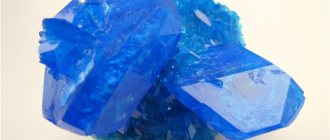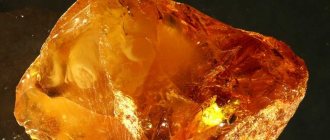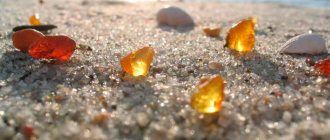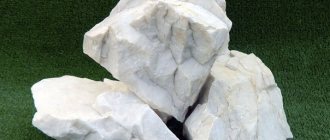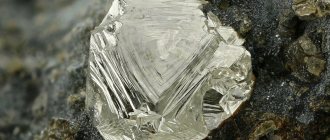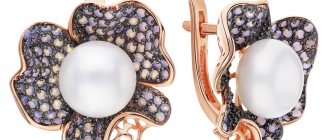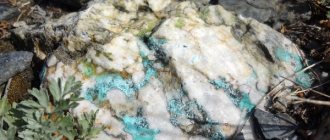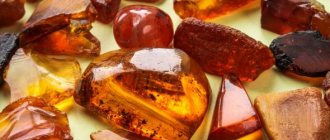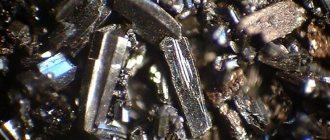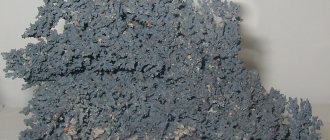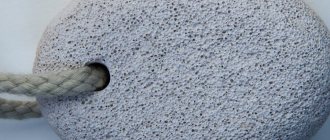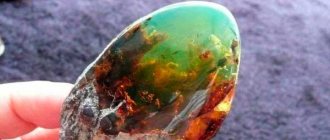All about stones
- Gemstones are minerals that have a beautiful appearance. They are considered quite rare and expensive. They are used to create beautiful jewelry, collect collections and bank assets.
- Today there are more than 4,000 minerals of various kinds in the world. Every year, scientists have to discover many new minerals, as well as close others based on the fact that they no longer exist in nature.
- Scientists extract stones that belong to the group of precious stones only with their own hands.
- Stones are born, grow and die. The life of many of them lasts quite a long time. Stones live for millions of years. They, unlike living organisms, under favorable conditions retain their appearance unchanged.
The most interesting specimens
Vanadinite stone holds the title of the heaviest mineral on the planet. The yellow-red crystal is named after the Scandinavian goddess of beauty. The high concentration of lead in barrel-shaped stones makes them quite dense and hard. The brittle mineral formed by the oxidation of lead ore deposits is one of the unique collection materials.
Diamond is recognized as the most durable mineral not only on Earth, but also in the Universe. Transparent crystals of the material are formed based on carbon atoms. The most amazing thing is that despite the incredible hardness of the stone, diamond is very fragile: with a sharp and strong blow, it easily breaks into small pieces.
Cut diamonds – diamonds are also recognized as the most expensive minerals. Expensive stones are measured in carats. One carat corresponds to 0.2 grams.
World-famous diamonds, surrounded by myths and legends:
- Kullian is a colorless stone measuring 50x65x110 mm, on the basis of which 105 faceted diamonds were made. One of them, the “star of Africa,” adorns the scepter of Great Britain.
- Kohinoor is a colorless diamond discovered in India back in 800 AD. The legendary stone has changed many owners and has a rich history. Today it adorns the crown of Elizabeth, Queen of Great Britain.
- Almaz Orlov is a stone found in the depths of the lands of India in the 17th century. A diamond with a rich history is today kept in the Diamond Fund of Russia, decorating the imperial scepter of Catherine the Second.
The title of the rarest mineral in the world is painite. The number of specimens found does not exceed five hundred. The rare stone has a high price on the market, and therefore fakes can often be found under the guise of painite. The only way to determine the authenticity of a mineral is through exposure to UV rays, under the influence of which its red-brown crystals acquire a greenish tint.
A gem called black opal has a special mystery and beauty. Each specimen found in nature is unique, like a human fingerprint. The beauty of the stone lies in the multi-colored sparkling flashes shimmering within the dark crystallized silicic acid. The more diverse the shades of radiance, the higher the cost of the gem. Since the stone is of organic origin, when it loses moisture, it cracks and, over time, completely collapses.
Another interesting fact is that some gems are able to emit a specific odor. For example, clinoclase, which consists of intergrowths and rosettes of split crystals, emits a characteristic garlic odor when heated.
The nasty, suffocating smell of hydrogen sulfide is emitted by cinnabar and galena. An unpleasant odor is released when minerals melt and burn. Jet, bitumen and ozokerite have a characteristic petroleum “aroma”, and the smell of burnt bone appears when pieces of phosphorite are rubbed against each other.
Legends and myths of different nations about stones
The Indian lapidaries say about the stones that this is the blood that was shed by the fabulous king Asura during the fight against the monster. When this blood spilled to the bottom of the river, rubies appeared. When blood hit the sand near the Ganges River, grenades appeared. When the gall of the defeated king was placed in the desert area near the sea, the emerald was born. If we talk about pearls, then these are the tears of the sea for dead heroes.
According to Hindus, the souls of the dead inhabited not only animals and people, but also some types of stones, especially gems. There the souls stayed until complete purification, which was the beneficial effect of the stone on the “owner”.
Ancient peoples believed that pearls came from the morning dew, which was formed by the tears of the goddesses of love. It was said about malachite that it allows you to make everyone invisible, and if you have to drink from a malachite container, you will be able to understand the language of living beings.
Blue Garnet
This is an amazing creation of nature. Another name is mood stone . Shows different shades throughout the day. Very rarely, in sunlight, you can see a flashing red light from the very depths of the stone.
Where it occurs:
- Tanzania.
- Kenya.
- Madagascar.
- Sri Lanka.
- Norway.
- USA.
It is considered the most expensive type among all garnets.
Features of Blue Garnet:
- High mechanical strength.
- The hardness index ranges from 6.5 to 7.5 (Mohs scale).
- Thermal strength.
Many believe that pomegranate speeds up the healing of wounds and fractures. The gem can also support the human immune system.
The natural power of gems
- Aventurine is a symbol of love and happiness. Such minerals of pink, green or brown color will allow a person to reveal his creative abilities.
- Ruby is a stone for leadership. It gives its owner additional energy.
- Turquoise is a stone of luck and victory. He has unusual abilities that allow him to suppress feelings of anger and irritation towards people.
- Malachite is an ideal amulet for children. It will protect them from danger and the manifestation of disease.
- Lapis lazuli is a heavenly stone that imparts kindness and peace to its owner.
Beautiful and dangerous
When heated, a crystal like a stone emits a gas dangerous to human health - radon. Poisonous gas may cause lung cancer. Radioactive elements, affecting immune and hematopoietic cells, lead to the development of various types of diseases.
Read also: Interesting facts about teeth, structure, classification, names
Stibnite is considered an equally toxic antimony sulfide mineral. This hard and fragile stone in the form of needle-shaped crystals with a slight iridescent tint and silvery sheen can cause severe poisoning when in contact with the skin. Just 100 mg of Sb in the human body can become a lethal dose for it.
Chalcanthite is another incredibly beautiful, but quite dangerous stone, which is formed from short prismatic crystals of bright blue, sky blue or greenish turquoise. This stone is also called the “copper flower”, and upon contact with liquid it releases toxic substances that become a threat to the life of all living things. If you throw a small blue stone into a pond, you can kill life in the entire pond.
Origin of minerals
Magmatogenous processes occur due to the solidification and crystallization of magma. This rock melt is predominantly composed of silicates and contains all the chemical elements. It can overcome the resistance of overlying rocks and flow to the surface or remain in the bowels of the earth, cool and crystallize there.
Metamorphic processes involve changes in minerals in the depths under the influence of temperature and pressure. Interesting facts about the breeds speak about this. Such phenomena can occur due to a change in the geological situation and the original occurrence of rocks.
The origin of fossils also depends on exogenous processes. Such phenomena are caused by connections with the energy of the Sun and external factors. Such processes occur at low temperatures and at normal pressure near the earth's surface. They consist in the fact that minerals exposed and located at shallow depths are subject to weathering when exposed to water, wind, sun and organisms. Those rocks and minerals that are destroyed are carried away, and some of them remain in place, forming placers of platinum, gold, zircon, garnet, diamond, tin, magnetite and tungsten derivatives.
Mica interesting facts. Mica - what is it?
You've probably come across a piece of mica more than once that you easily broke into pieces. You may have called it "gelatin". Mica is a mineral. The term "mica" includes a whole family of rock minerals, which includes muscovite, flugopite, biotite and lepidolite. Since it is difficult to pronounce their names, you will understand why we call all these minerals “mica”.
All of these minerals are very similar, although they contain different metals. All types of mica are easily separated into layers. They are soft, even fingernail marks remain on their surface. They all form the same types of crystals. They are colorless, yellow, green, red, brown and black. Mica occurs in rocks in the earth's crust. They are part of rocks of volcanic origin, which were formed when molten lava cooled. In some cases, mica originated from other minerals through a process called “metamorphism,” which is changes caused by pressure, heat, and exposure to water. Mica is mined in mines. The most important mica mining areas are the USA, Canada, India, Madagascar, Russia, Brazil and South Africa. For industrial use, mica is exfoliated and cut into required pieces. Mica is a good insulator; it does not conduct heat or electricity. It is clear that mica is widely used in the manufacture of electrical equipment and fire-resistant materials. You have mica in your iron and other electrical appliances at home.
Application of minerals
Chemical preparations are made from many minerals, such as: saltpeter, organic sulfur, fluorspar, potassium, boron minerals, mercury, magnesium, sodium.
Read also: Who invented the popsicle - three versions of a delicious invention
The development of agriculture and stones are closely interrelated, because mineral fertilizers are created on their basis, such as potassium salts, silicates, apatites and phosphorites.
Some minerals and their chemical processing products are used to create medicines. Glauber's salt is created on the basis of mirabilite, and mineral waters are created on the basis of Borjomi and Narzan.
Interesting minerals are also used in the metallurgical industry. So, for example, vanadinite, rhodochrosite, dolomite, colemanite are used in this area. It is simply impossible to build a building without gypsum, dolomite and calcite.
Minerals that people use in the jewelry segment are divided into precious and ornamental stones. This is a wide range of their use.
Lithium
Mineral discovered by a Swedish chemist in 1817. Lithium is in great demand and is used in the following areas:
- Metallurgy.
- Manufacturing of batteries.
- Nuclear energy.
- Medicine.
- Pyrotechnics.
The main production takes place in Afghanistan.
Distinctive features:
- Silver color.
- Pronounced plastic properties.
- High melting point.
- Low density (lower than water).
Stored in tins, immersed in paraffin.
Using gems as a tool
The main difference that a fossil like a gem has is its hardness. Rubies, diamonds, chrysoberyl and sapphires are extremely resistant to wear.
In this regard, it is not surprising that in ancient times people used gems in everyday life, and in China, diamonds were used to polish ritual axes. Now, approximately 80% of mined diamonds are used for industrial purposes.
Field
Each country occupies its own specific place in the industrial development and extraction of natural raw materials. New reserves of underground wealth are discovered every year, so the first positions of individual states change from year to year.
Russia has been and remains a leader in natural resources. The largest gas deposits are Urengoyskoye and Yamburgskoye. The richest areas with coal are located in the Urals, Eastern Siberia, the Far East and the central part of the country.
The main gas and oil fields on other continents are located in foothill troughs and depressions. The world's largest mining sites are located on the seabed of the continental shelves of Africa and Australia.
Latin America has reserves of non-ferrous and rare metals, which puts it in first place among other countries and continents. North America contains large coal basins, and Asia contains reserves of precious and semi-precious stones.
The healing properties of gems: myth or reality
It has long been believed that rocks have the ability to relieve diseases, bring money and good luck, and attract love. There is interesting evidence that stones have magical properties.
And now minerals are correlated with the signs of the Zodiac, I recommend choosing “your” stone.
Useful information on how to choose and wear stones correctly
Those born in spring can choose such precious stones as: green diamond, sapphire, emerald, amethyst, peridot and pink topaz.
People born in summer need strong protection, which will be provided by aquamarine, ruby, emerald, garnet, zircon, pink topaz and chrysoberyl.
Those born in autumn can opt for topaz, garnet, sapphire, adamantium and peridot.
A person born in winter most often has an unyielding and firm character, but sometimes personal success is not enough for such people. Amulets and talismans made of crystal, diamond, turquoise, quartz, sapphire and moonstone can combat this problem.
Two weeks after purchasing the stone, the mineral is not used for its intended purpose, but it is worth communicating with it: praising, stroking and talking.
You cannot wear or use cracked gem jewelry that has been damaged by mechanical impact. If it is amber with a natural defect, then it is permissible to use it.
Meaning
It is difficult to imagine a national economy or industrial activity without the use of rocks. They began to use them for their own needs back in ancient times, when people learned to process stones.
The first place where natural raw materials are used is the construction industry. Marble, limestone, granite, quartzite and other substances are in demand here. Some rocks find their use in metallurgy, for example, fire clay and dolomite.
In the chemical industry, rock salt, tripoli and diatomaceous earth are used. In agriculture, one cannot do without potassium salts and phosphorites, which are included in fertilizers.
Thus, we can conclude that minerals are necessary assistants to humans in almost every area.
Interesting facts about minerals
- The most common mineral underground is feldspar, and on its surface is granite.
- Minerals are often in solid form, but if heated well, they can be liquid or even gaseous.
- The valuable mineral alexandrite was named in honor of Tsar Alexander II.
- During the expedition to the Moon, astronauts managed to find a unique mineral, tranquillite. For many years it was believed that it did not exist on Earth at all, but in 2011 a sample of this mineral was found in Australia.
- A rare mineral called red emerald is mined only in the USA.
Rose quartz
Deposits are located all over the world. These are the Swiss Alps, Italy, France, and Transcarpathia. The soft pink mineral becomes colorless in the sun. Variety – rock crystal . It has many medicinal properties: it restores the nervous system, makes a person more restrained and balanced.
Each rose quartz crystal is unique; there is no other like it in nature. The composition includes impurities of manganese, iron and titanium.
Origin of stone names
- African or Brazilian emerald refers to minerals that were mined in Africa and Brazil.
- There is a tradition of giving a name in honor of someone. So, for example, the stone was named Lomonosovite in honor of the scientist
- Labradorite is a mineral from the feldspar group of gray or blue-black color with bright and iridescent tints. It got its name from a deposit on the Labrador Peninsula.
- There is a huge group of minerals that bear geographical names. Alaskite was found in Alaska, andalusite was found in the Spanish province of Andalusia, vesuvianite was found on Mount Vesuvius, and cubanite was found in Cuba.
- Avicennite and birunite were named in honor of the great scientists of the Middle Ages, Biruni and Avicenna.
- It happens that the name of a mineral is made up not just by a person’s last name, but by a combination of his first name and last name. So, in honor of Henri Termier, a professor of geology from Paris, the mineral was named anrittermierite, and in honor of a professor from Chicago, Julian Goldsmith, the mineral was named julgoldite.
Jade
It has a granular structure . The stone is very difficult to obtain, which explains its high cost. Known deposits: Guatemala, Mexico.
Main types of jadeite:
- Imperial (has an emerald green color).
- Commercial (green stone with transparent veins).
- Utility (color – opaque green, the cheapest type of jadeite).
Helps cure many kidney-related diseases. Stone bracelets stabilize blood pressure.
Choosing the right stone
When choosing a talisman for yourself, astrologers recommend relying on zodiac signs, date, and month of birth. Choosing a talisman is somewhat easier. To do this, you need to determine what you should protect yourself from.
Read also: The first traffic light appeared in London, and it was two-color
The most powerful amulets are those given by loving people from the heart. Also good are those talismans that were literally given by fate or appeared in life under strange circumstances.
